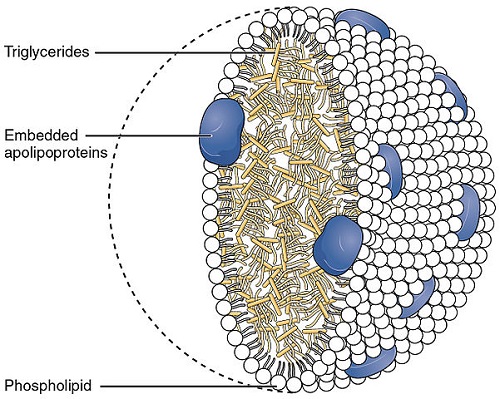
Fats and oils are essential components of the human diet, serving as a concentrated source of energy and playing crucial roles in various physiological functions. While they have distinct physical states at room temperature, fats being solid and oils liquid, they share several similarities due to their chemical structure and composition. This article explores the commonalities between fats and oils, shedding light on their shared characteristics.

Chemical Composition:
Triglycerides: Both fats and oils belong to the lipid family, primarily composed of triglycerides. Triglycerides consist of three fatty acid molecules attached to a glycerol backbone through ester linkages. This fundamental structure is shared by both fats and oils.
Fatty Acids: The fatty acids in fats and oils can be saturated or unsaturated. Saturated fats/oils contain only saturated fatty acids, while unsaturated fats/oils contain one or more unsaturated fatty acids, such as monounsaturated or polyunsaturated fats.
Energy Storage:
Caloric Density: Fats and oils are dense sources of energy, providing approximately 9 calories per gram. This high caloric density makes them efficient for energy storage in the body.
Energy Reserves: Both serve as energy reserves in living organisms, stored in adipose tissue as a long-term energy source to be utilized during periods of low food intake.
Insulation and Protection:
Thermal Insulation: Fats, in the form of adipose tissue, provide thermal insulation, helping to maintain body temperature.
Organ Protection: Adipose tissue also acts as a protective cushion around organs, offering a layer of insulation and shock absorption.
Essential Nutrients:
Essential Fatty Acids: Fats and oils are vital sources of essential fatty acids, such as omega-3 and omega-6, which the body cannot produce on its own and must be obtained through the diet.
Biological Functions:
Cell Membrane Structure: Both fats and oils contribute to the structure of cell membranes, influencing their fluidity and permeability.
Hormone Synthesis: Lipids, including fats and oils, are involved in the synthesis of hormones and signaling molecules that regulate various physiological processes.
In summary, while fats and oils may differ in physical state at room temperature, their similarities in chemical composition, energy storage, insulation, and essential nutrient provision underscore their fundamental roles in human biology. Recognizing these shared characteristics enhances our understanding of the diverse functions lipids perform within the body.
Here’s a simplified comparison chart highlighting the similarities between fats and oils:
| Aspect | Fats | Oils |
| Physical State | Solid at room temperature | Liquid at room temperature |
| Chemical Composition | Triglycerides (glycerol + 3 fatty acids) | Triglycerides (glycerol + 3 fatty acids) |
| Energy Content | High caloric density (9 calories/g) | High caloric density (9 calories/g) |
| Energy Storage | Long-term energy storage in adipose tissue | Long-term energy storage in seeds and plant tissues |
| Essential Nutrients | Source of essential fatty acids (e.g., omega-3, omega-6) | Source of essential fatty acids (e.g., omega-3, omega-6) |
| Biological Functions | Component of cell membranes, influencing fluidity | Component of cell membranes, influencing fluidity |
| Insulation | Provides thermal insulation and organ protection | Notable for thermal insulation (e.g., blubber in marine animals) |
| Biological Roles | Hormone synthesis and signaling molecules | Hormone synthesis and signaling molecules |
| Dietary Sources | Animal sources (meat, dairy) and some plant sources | Primarily plant sources (olive oil, sunflower oil, etc.) |
| Common Examples | Butter, lard, solid margarine | Olive oil, canola oil, sunflower oil |
Note: This chart provides a concise overview of the similarities between fats and oils. The actual composition of specific fats and oils can vary based on the types of fatty acids they contain (saturated, monounsaturated, polyunsaturated) and their origin (animal or plant).
Frequently Asked Questions (FAQ) on Fats and Oils:
Q1: What is the primary difference between fats and oils?
A1: The primary difference lies in their physical state at room temperature. Fats are solid, while oils are liquid. This distinction is mainly due to the types of fatty acids present and their degree of saturation.
Q2: Are fats and oils the same from a chemical perspective?
A2: Yes, both fats and oils are composed of triglycerides, which consist of glycerol and three fatty acid molecules. The specific fatty acids present, whether saturated or unsaturated, contribute to their unique properties.
Q3: Why are fats and oils considered high-energy foods?
A3: Fats and oils have a high caloric density, providing around 9 calories per gram. This makes them efficient energy storage molecules in the body, offering a concentrated source of energy for metabolic processes.
Q4: How do fats and oils contribute to human health?
A4: Both fats and oils play vital roles in the body, including serving as essential components of cell membranes, aiding in the absorption of fat-soluble vitamins, and providing a source of essential fatty acids that the body cannot produce on its own.
Q5: Can you provide examples of sources for fats and oils?
A5: Fats are commonly found in animal sources such as meat and dairy products, as well as in some plant sources like nuts and seeds. Oils, on the other hand, are predominantly derived from plant sources, such as olive oil, canola oil, and sunflower oil.
Q6: How do fats and oils contribute to maintaining body temperature?
A6: Fats, especially in the form of adipose tissue, provide thermal insulation. They help regulate body temperature by acting as a barrier against heat loss and contributing to the overall insulation of the body.
Q7: Are there differences in health implications between consuming fats and oils?
A7: The health implications depend on the types and proportions of fatty acids present. Diets high in saturated fats may be associated with certain health risks, while unsaturated fats, especially those with omega-3 and omega-6 fatty acids, are considered beneficial for health.
Q8: Why are essential fatty acids important, and where can they be found?
A8: Essential fatty acids, such as omega-3 and omega-6, are crucial for various physiological functions. The body cannot produce them independently, so they must be obtained through the diet. Sources include fatty fish, flaxseeds, walnuts, and certain vegetable oils.
Q9: Can fats and oils be part of a healthy diet?
A9: Yes, fats and oils are essential components of a balanced diet. Choosing healthy fats, such as those from plant sources and fish, and moderating overall fat intake can contribute to a well-rounded and nutritious diet.
Q10: How should one balance the consumption of fats and oils for optimal health?
A10: It’s advisable to consume a variety of fats, emphasizing unsaturated fats over saturated fats. Including sources of essential fatty acids, such as fatty fish and certain plant oils, contributes to a balanced and healthy diet. As with any nutrient, moderation is key. Consultation with a healthcare professional or nutritionist can provide personalized guidance based on individual health needs.











